What's New
Displaying results 441 - 450 of 4052
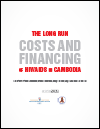
Resource | Publications,
Cambodian stakeholders led this case study throughout the entire exercise. This study applied and validated at the national level the costing, priority-setting, and financial mobilization tools that were developed by the aids2031 project globally. It is hoped that this study will lead to a better understanding of the future course of HIV/AIDS in Cambodia and the policy options facing the government, civil society, and international partners for addressing the epidemic.
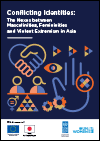
Resource | Publications,
This publication includes expert analyses through case studies to highlight how unequal gender power structures fuel and shape violent extremism around the region. It emphasises how structures of patriarchy and harmful performances of masculinity are deeply embedded in the modus operandi of violent extremist groups. It offers policy makers and practitioners a unique insight into the gender dynamics that underpin violent extremism in South and South-East Asia. It will benefit stakeholders working in this area to ensure that holistic understandings of gender identity are integrated into policy and programming approaches to prevent violent extremism.
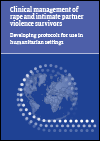
Resource | Guidelines,
This guide includes detailed guidance on the clinical management of rape and intimate partner violence survivors. It is intended for use by qualified health-care providers in developing protocols for the management of rape and intimate partner violence survivors in emergencies, taking into account available resources, materials, and drugs, and national policies and procedures. It can also be used in planning health-care services and training health-care providers.
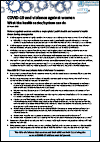
Resource | Publications,
Violence against women remains a major global public health and women’s health threat during emergencies. This short document provides some key information about what the health sector and individuals can do during to prevent and address violence against women during the COVID-19 pandemic.
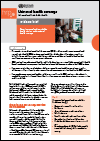
Resource | Publications,
This brief highlights the evidence on the current critical issues in the financing of SRH services under UHC. The evidence presented draws particular attention to the funding gap for SRH services, the potential and the limitations of available mechanisms for funding SRH, and the approaches, including strategic purchasing, for improving the efficiency and equity of existing resources in the context of resource-constrained settings.

Programmatic Mapping and Population Size Estimation (p-MPSE) of High-Risk Groups: Operational Manual
Resource | Publications,
These guidelines with the institutionalization of the programmatic mapping and size estimates of Key Populations exercise biennially with a revalidation step between two rounds, will guide strategic actions towards closing the gaps in prevention coverage and reach out to each person at risk of been infected by HIV to further reduce incidence of HIV.
These guidelines emphasise two main features :1) the mapping will focus on Key Populations but broaden the definition and the spaces for mapping, to capture populations previously left out of the prevention programmes, and 2) the programmatic mapping will be community-led within a technical framework provided by NACO.
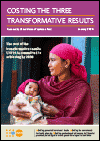
Resource | Publications,
Costing the Three Transformative Results focuses on new research to estimate the costs associated the global effort led by UNFPA to: (a) end preventable maternal deaths, (b) end the unmet need for family planning, and (c) end gender-based violence and all harmful practices, including child marriage and female genital mutilation.
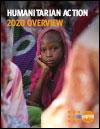
Resource | Publications,
UNFPA, the United Nations sexual and reproductive health agency, appeals for $683 million to provide life-saving reproductive health and protection services to 48 million women, girls and young people, including 4 million pregnant women, in 57 countries affected by conflict or natural disasters in 2020.
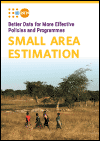
Resource | Publications,
This brochure describes a method of Small Area Estimation that combines census and household survey data. It also presents a case study based on data from Nepal. The case study illustrates the use of census as well as demographic and health survey data to generate estimates of three family planning related indicators for Village Development Committees and Municipalities in rural and urban areas, respectively.
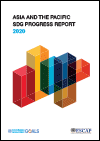
Resource | Publications,
This report analyses trends as well as data availability for monitoring progress toward the Sustainable Development Goals (SDGs) in Asia and the Pacific and its five subregions. It assesses gaps which must be closed to achieve the goals by 2030. This assessment is designed to ensure the region’s actions remain on target, shortcomings are addressed as they arise, and all interested parties remain engaged. It is an invaluable resource for all stakeholders involved in prioritization, planning, implementation and follow-up of the 2030 Agenda for Sustainable Development in Asia and the Pacific.





